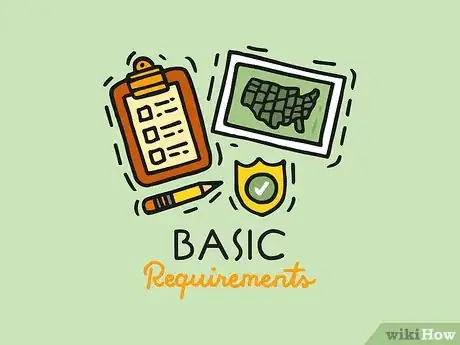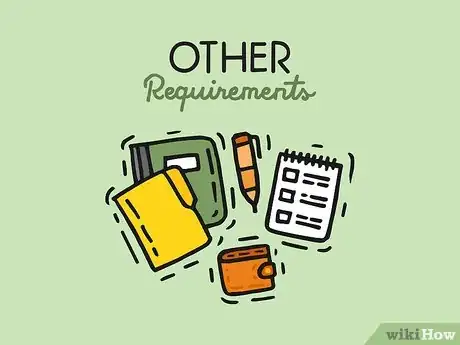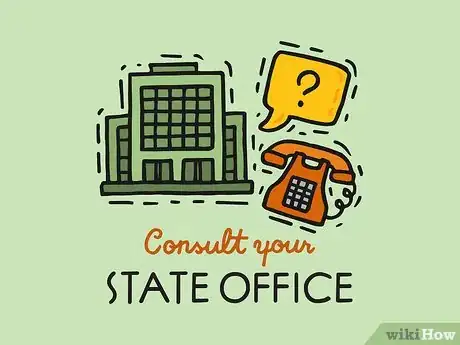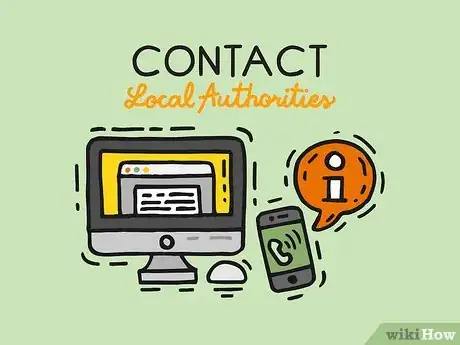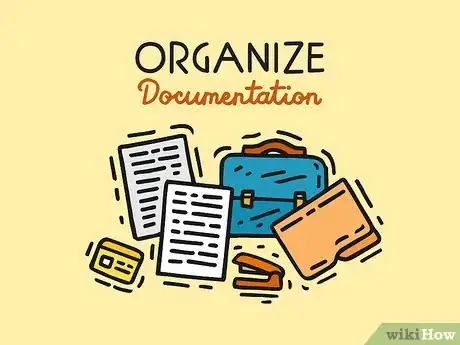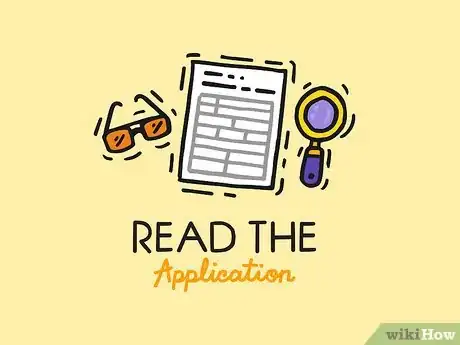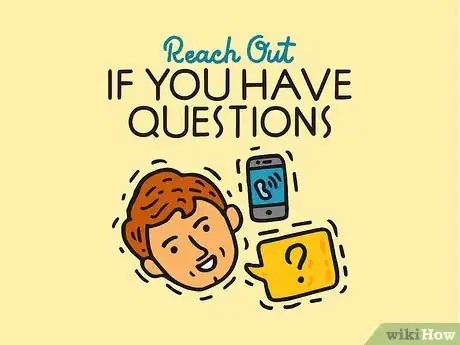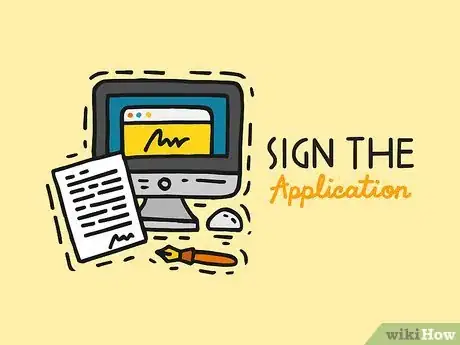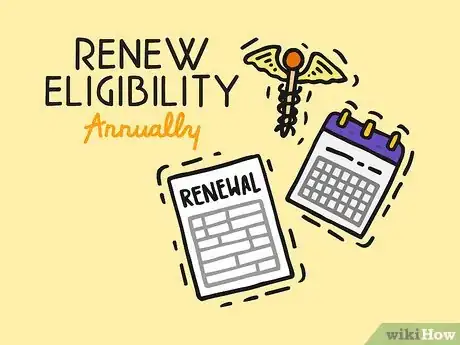This article was co-authored by Clinton M. Sandvick, JD, PhD. Clinton M. Sandvick worked as a civil litigator in California for over 7 years. He received his JD from the University of Wisconsin-Madison in 1998 and his PhD in American History from the University of Oregon in 2013.
There are 10 references cited in this article, which can be found at the bottom of the page.
This article has been viewed 64,570 times.
Medicaid is a health insurance program funded by the United States government.[1] It provides health coverage for different categories of individuals and families, especially those less fortunate. However, under new legislation in the Affordable Care Act of 2010, the government expanded Medicaid eligibility. By verifying your eligibility and applying for Medicaid programs, you may be able to get free or low cost coverage for yourself and other family members.
Steps
Determining Your Eligibility
-
1Inform yourself about Medicaid. Before you begin the process of applying for Medicaid, it’s advisable to learn about the program. This may help you in the application process or even help you better understand the types of benefits for which you are eligible.
- Medicaid and its partner program CHIP (Children’s Health Insurance Program) give almost 60 million American some type of health coverage.[2]
- Medicaid and CHIP cover a wide range of individuals including children, pregnant women, parents, senior citizens, and persons with disabilities.[3]
- Although a federal program, individual states handle Medicaid applications and programs.[4]
- Federal law requires that states cover certain population groups called “mandatory eligibility groups” while giving the states the option to cover other groups called “optional eligibility groups.”[5] For example, pregnant women, people with disabilities, and children are considered mandatory groups.[6] Optional groups include foster children and low income families.[7]
-
2Verify you meet basic requirements. At the very least, you must be a citizen, permanent resident, or resident alien to qualify for Medicaid. Federal and state programs require you provide proof of this information in order to receive Medicaid.[8]
- Be aware that these basic requirements can vary from state to state.[9]
Advertisement -
3Confirm you meet other requirements. In addition to the aforementioned basic requirements, there are many other criteria that you generally need meet to qualify for Medicaid. These criteria may include but are not limited to:
- Your income. Income is measured against the Federal Poverty Level, or FPL. This number changes frequently, but was $29,700 for a family of four in 2011. [10]
- Pregnancy.
- Age. If you are 65 or older or are under the age of 21, you may qualify.
- Disability, including blindness.
- Current coverage or lack thereof.
- Children in your household. If you are the guardian of a minor, but have restricted income, you may qualify.[11]
-
4Consult your state Medicaid office. Because individual states determine final eligibility and benefits for Medicaid, consult your home state’s Medicaid office either online or by phone.
- State eligibility criteria sometimes differs. Even if you are not in one of the mandatory coverage groups, you may qualify for Medicaid under state law of optional coverage groups.
- Many states are expanding coverage, especially for children. Again, check the state requirements to see if your child might be eligible to apply and receive benefits even if you don’t.
- The Centers for Medicare and Medicaid Services provide contact information and links to each state’s respective Medicaid site.[12]
-
5Contact local authorities. It is easy to be confused by questions about Medicaid and its eligibility. If you have any questions, you can contact local authorities or consult the Medicaid program’s website, who may be able to further assist you.
- You can either visit the Medicaid website at www.medicaid.gov or visit your home state’s Medicaid website. In most cases, you can also find state resources on the Medicaid website at http://www.medicaid.gov/state-resource-center/medicaid-state-technical-assistance/medicaid-state-technical-assistance.html .
- You can also contact or visit one of the ten regional Centers for Medicare and Medicare if you have questions. Information on these ten sites is available at https://www.cms.gov/Medicare/Coding/ICD10/CMS-Regional-Offices
- If you do not have access to the Internet from your home or prefer to speak to someone directly, you can call +1 (877) 267-2323.[13]
-
6Establish eligibility online. The United States government also allows potential Medicaid recipients to determine if they are eligible online.[14] By accessing the website at https://www.healthcare.gov/medicaid-chip/ and entering your state, you may can get a quick response about your eligibility.
- Simply enter your home state in the appropriate box and answer the series of questions to find out your preliminary Medicaid coverage determination.[15]
- This will determine if you are eligible based on income alone. For other criteria, you’ll need to fill out the application for your specific state.
Filing Your Application
-
1Organize documentation. Your home state will need to verify information on your Medicaid application by cross-referencing it with certain documents in which you may be in possession. Having these documents can help you get benefits to which you’re entitled more quickly. In order to do this, you should have copies of:
- Your birth certificate, Social Security number, and/or guardianship papers (if applicable).
- Your driver's license and vehicle registration.
- Proof of residency in the state in which you are applying for Medicaid.
- Any pay stubs or other proof of income.
- Names of your financial institutions and any bank account numbers.
- Real estate deeds.
- Unpaid doctor or health care bills.
- And your Medicare Benefit Card (if applicable).
-
2Read the application. Whether you are filling out a hard copy of an application or answering questions online, make sure to read the entire application and each question carefully and in their entirety before answering them. This can help ensure that you don’t make any mistakes that may disqualify you.
- The Medicaid application, as well as those that allow you to simultaneously apply for other benefits such as cash assistance, will ask questions about your date of birth, residence, children, pregnancy, and income. You are also likely to answer questions about disabilities and any other pertinent information to assessing your case.
- Most state Medicaid applications are a set of screens that are displayed for you with a series of questions on each page.
-
3Be honest or answer to the best of your ability. It’s absolutely vital to be honest in your answers or to fill out questions to the best of your knowledge. Knowingly falsifying information is a federal crime, while to the best of your knowledge can disqualify you from benefits.
- Draw upon your at-hand data about income, disabilities, or other qualifying criteria. This information can help you effectively and honestly answer each question.
-
4Answer as thoroughly as possible. In addition to honesty and answering questions to the best of your knowledge, it’s also important to respond to as many of the questions as you can. This will help the worker who receives your application more quickly and effectively assess your eligibility and the benefits for which you qualify.
- The application has certain questions that you must answer. If you do not provide this information, you will not be able to proceed on to the next screen of questions or submit your application.
-
5Reach out if you have questions. Navigating Medicaid can be confusing and daunting for many people. If you have any questions, don’t be shy about contact local or federal Medicaid officials. They’re there to help you and get you benefits as quickly as possible.
- Schedule a time to meet with a Medicaid officer or a social or human services representative if you still have questions or concerns about your eligibility, or the Medicaid application process. You can also contact your county health department.
- You can contact these authorities by visiting their offices or calling the local Centers for Medicaid and Medicare at +1 (877) 267-2323.[16]
-
6Review your application. After completing each screen, review your answers to all of your questions. This can help ensure that you have answered all of the questions thoroughly and correctly.
- If you have lingering questions about certain answers, respond to the best of your knowledge or contact your local Medicaid officer.
-
7Sign your application. You must sign your application in order to submit it to state authorities for processing. Anyone over the age of 18 may sign the application.
- If you submit a hard copy, sign your application with a pen.
- If you are submitting your application online, you can opt to electronically sign the document. You do not need to submit a signed form via mail or fax if you choose this option. Be aware that only adults over the age of 18 and emancipated minors over the age of 16 can use the electronic signature option.
-
8Submit and confirm your application. You can submit your Medicaid application either online or by mail or fax. Your home state will not consider your application until you send the application and any supporting materials. Once you’ve submitted, confirm receipt
- If you are submitting electronically, you will receive a confirmation on a separate page.
- You can submit your application at the local Medicaid authority or by mail or fax as well. If sending your application by mail, consider using certified mail to confirm delivery.
-
9Await your determination. Once you’ve submitted your application, you’ll need to wait for your eligibility, and, where applicable, your benefits determination. This process can take anywhere from a few days to 90 days.
- Be sure to follow up on the status of your application if you don't receive a response within a reasonable time.
- If any of the information from your application changes, make sure to report it to the appropriate Medicaid representatives in your area. This can change the status of your application, eligibility, or benefits determination.
-
10Renew your eligibility annually. Because regulations and personal situations are constantly changing, you need to renew your eligibility for Medicaid every year. In most cases, your home state will contact you when your eligibility is about to expire. If you’ve applied for Medicaid in the past, the renewal process is usually not as long as the initial application.
Warnings
- Do not let anyone use your Medicaid card; let alone lend your card to anyone. In most states, this is a criminal offense.⧼thumbs_response⧽
- Do not give out your Medicaid number to anyone. This includes responding to any special offers requesting that information. Your state's Medicaid program will never ask you to provide this information. If you do get a call requesting such, report it immediately.⧼thumbs_response⧽
- Do not use someone else's Medicaid card. This constitutes identity theft, and you will be prosecuted.⧼thumbs_response⧽
- Medicaid does not provide medical assistance for all those whose income and resources are limited.⧼thumbs_response⧽
Things You'll Need
- Medicaid application
- Proof of residence
- Statement of earnings
- Medical bills
- Bank statements
- Vehicle registration
- Property deed
References
- ↑ hhttps://www.medicaid.gov/medicaid/eligibility/index.html
- ↑ https://www.medicaid.gov/medicaid/eligibility/index.html
- ↑ https://www.medicaid.gov/medicaid/eligibility/index.html
- ↑ https://www.medicaid.gov/medicaid/eligibility/index.html
- ↑ https://www.medicaid.gov/medicaid/eligibility/index.html
- ↑ https://www.medicaid.gov/sites/default/files/2019-12/list-of-eligibility-groups.pdf
- ↑ https://www.medicaid.gov/sites/default/files/2019-12/list-of-eligibility-groups.pdf
- ↑ https://www.medicaid.gov/medicaid/eligibility/index.html
- ↑ https://www.medicaid.gov/medicaid/eligibility/index.html
- ↑ https://www.medicaid.gov/medicaid/eligibility/index.html
- ↑ https://www.medicaid.gov/medicaid/eligibility/index.html
- ↑ http://www.cms.gov/Medicare/Medicare.html
- ↑ https://www.medicaid.gov/about-us/contact-us/index.html
- ↑ https://www.healthcare.gov/medicaid-chip/
- ↑ https://www.healthcare.gov/medicaid-chip/
- ↑ https://www.medicaid.gov/about-us/contact-us/index.html
- ↑ http://povertylaw.org/clearinghouse/pickle
- ↑ http://www.wnylc.com/health/entry/44/#
About This Article
Before applying for Medicaid, start by gathering your personal documents for the application, including your birth certificate, pay stubs, and driving license. When answering the questions on the form, make sure you are honest and provide as much detail as possible, as this will speed up the decision about your eligibility. When you’re done, review your answers for mistakes, and don’t forget to sign the application before submitting it. If you’re unsure about any of the questions, you can contact the local Centers for Medicaid and Medicare at +1 (877) 267-2323. To learn more about how to renew your Medicaid eligibility each year, keep reading the article!

